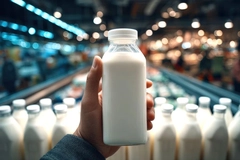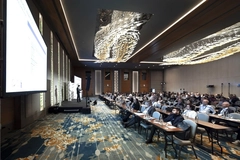GLAAD: Genuine LGBTQ representation on-pack crucial to avoiding inauthenticity backlash
28 Jun 2021 --- The quantity, diversity and impact of LGBTQ inclusion on F&B product packaging, advertising and marketing efforts are rapidly changing.
Brands that were once concerned about being ostracized for showing support during Pride Month are now more invested in ensuring their advocacy is received as genuine.
According to a 2021 report from US-based media monitoring organization GLAAD, marketing and ad executives are more concerned about the risks of inauthentic representation and negative responses from LGBTQ consumers than a public backlash for LGBTQ inclusion.
“LGBTQ consumers are savvy and will investigate marketing efforts to ensure brand authenticity,” flags Rich Ferraro, GLAAD chief communications officer.
As Pride Month officially comes to a close this week, PackagingInsights speaks with Ferraro about how on-pack LGBTQ support from F&B brands is evolving.
For the second consecutive year, Skittles has muted its colorful brand identity to show “only one rainbow matters during Pride.”“Given the amount of brands participating in Pride and LGBTQ outreach, F&B brands that want to break through and be noticed via earned media need to get creative and go beyond a rainbow,” Ferraro flags, referring to the traditional six-colored striped flag.
“When they do, it’s an opportunity to reach consumers not only with engaging creativity but with messages of LGBTQ affirmation.”
Connective technologies go beyond the pack
In Ferraro’s experience, the F&B industry has one of the longest histories of LGBTQ inclusion through design.
As reported last year, several F&B brands use the celebratory month to offer limited edition rainbow packaging designs and donate to various LGBTQ organizations.
This year, grey Skittles pouches returned to retailer shelves with its message that “only one rainbow matters during Pride.”
Kellogg’s new boxes also make subtle inclusions of Progress Pride Flag’s brown, black, pink and light blue colors to enhance inclusivity.“Many F&B brands not only create Pride-themed products, but use those products to tell stories about our community over social media,” Ferraro details.
Skittles also partnered with GLAAD to connect with LGBTQ advocate Blair Imani on the Skittles QueeR codes program, which showcases stories and experiences from five LGBTQ influencers.
The QueeR codes are only scannable on the website – not featured on-pack, despite nearly a quarter (23%) of US consumers being most interested in using connective packaging technologies for receiving brand and storytelling information (Innova Market Insights, 2021).
Cereal packs reimagine the rainbow
Meanwhile, on Kellogg’s new cereal boxes from its #BoxesAreForCereal campaign, supporters can pull off a tear-out “Together Band” to “share and wear” their pronouns.
Effen Vodka illustrates the diversity of the LGBTQ community, featuring the Progress Pride Flag.Sharing pronouns is widely touted “as one of the easiest ways to show support for the transgender and non-binary communities,” according to GLAAD.
“The interest is not just coming from LGBTQ people, but our allies and families too,” Ferraro highlights. A study released last year by GLAAD and Procter & Gamble showed that 75 percent of non-LGBTQ people are comfortable seeing LGBTQ included in ads.
Moreover, 68 percent felt better about buying products from companies that include LGBTQ people in ads.
Beverage support “sparks conversation”
In the beverage arena, Samuel Adams and Absolut Vodka drinks have been available throughout the past weeks in bold rainbow letters and stripes, respectively.
“When Pride is displayed on these products, it sparks conversation and also a sign of support to LGBTQ consumers,” says Ferraro.
Effen Vodka, a 100 percent wheat-distilled vodka brand, goes a step further to include the “Progress Pride Flag,” designed by Daniel Quasar in 2018 to represent marginalized trans people and communities of color.
Overall, Ferraro emphasizes F&B brands have a “tremendous reach” both on social media and in the aisles of supermarkets.
“Imagine how powerful it is for an LGBTQ person living where LGBTQ visibility is low to see their favorite brand proudly displaying its support. That’s the power that advertising and LGBTQ inclusion on products can have,” Ferraro concludes.
By Anni Schleicher












